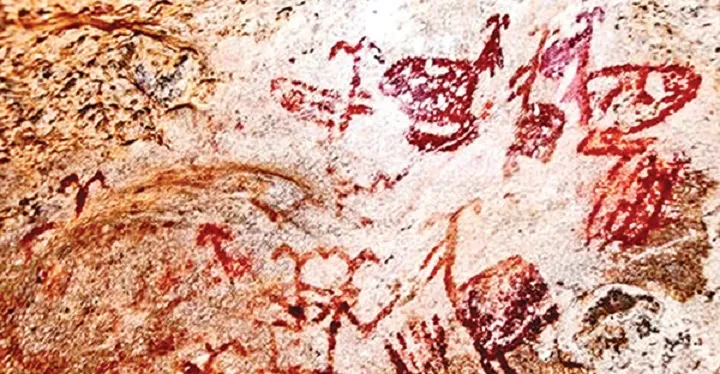

in order to facilitate mining [Credit: DHA]
Making a presentation at the conference, Mediterranean University academic Işık said hundreds of ancient rock paintings depicting spring feasts and wedding ceremonies were first discovered by a German archaeologist next to the Bafa Lake on Mount Latmos.
“We are losing this unique heritage because large stone quarries have been given permission to mine on Mount Latmos. Those who are working in these quarries are destroying these paintings with soap, sponge and emery in order to remove the restrictions brought about by the ‘archaeological site’ label. They should get death sentences just like child rapists and violent criminals. Humanism can be a very dangerous tool in the hands of bad people,” Işık stated.
German archaeologist Anneliese Peshlow-Bindokat discovered the rock paintings on Mount Latmos, also known as the Beşparmak Mountain, in 1949. They are considered the most important prehistoric archaeological findings discovered in recent years in Anatolia. The rock paintings date back to the late Neolithic Age and the Chalcolithic Age.
Işık also spoke about ongoing excavations in the Yarımburgaz Inn, which is 22 kilometers away from Istanbul, saying that settlements from 400 B.C. had been revealed, giving important clues about the Paleolithic Age.
“Actually people saw this inn in the popular TV series ‘Muhteşem Yüzyıl’ [A Magnificent Century]. Some scenes featuring the character Pargalı İbrahim Pasha were shot at this inn. Institutions responsible for protecting cultural heritage were shocked when they saw these scenes because nobody had been given permission to use this inn,” she said, criticizing the insufficient protection of cultural treasures in Turkey.
“The Yarımburgaz Inn has a very sensitive structure, but the character Pargalı İbrahim Pasha lay down in the middle of it and other actors sat around the pit where archaeologists had been carrying out excavations. This is our country; this is how our people treat cultural heritage. This is what we are,” Işık added.
Source: Hurryet Daily News [March 12, 2016]